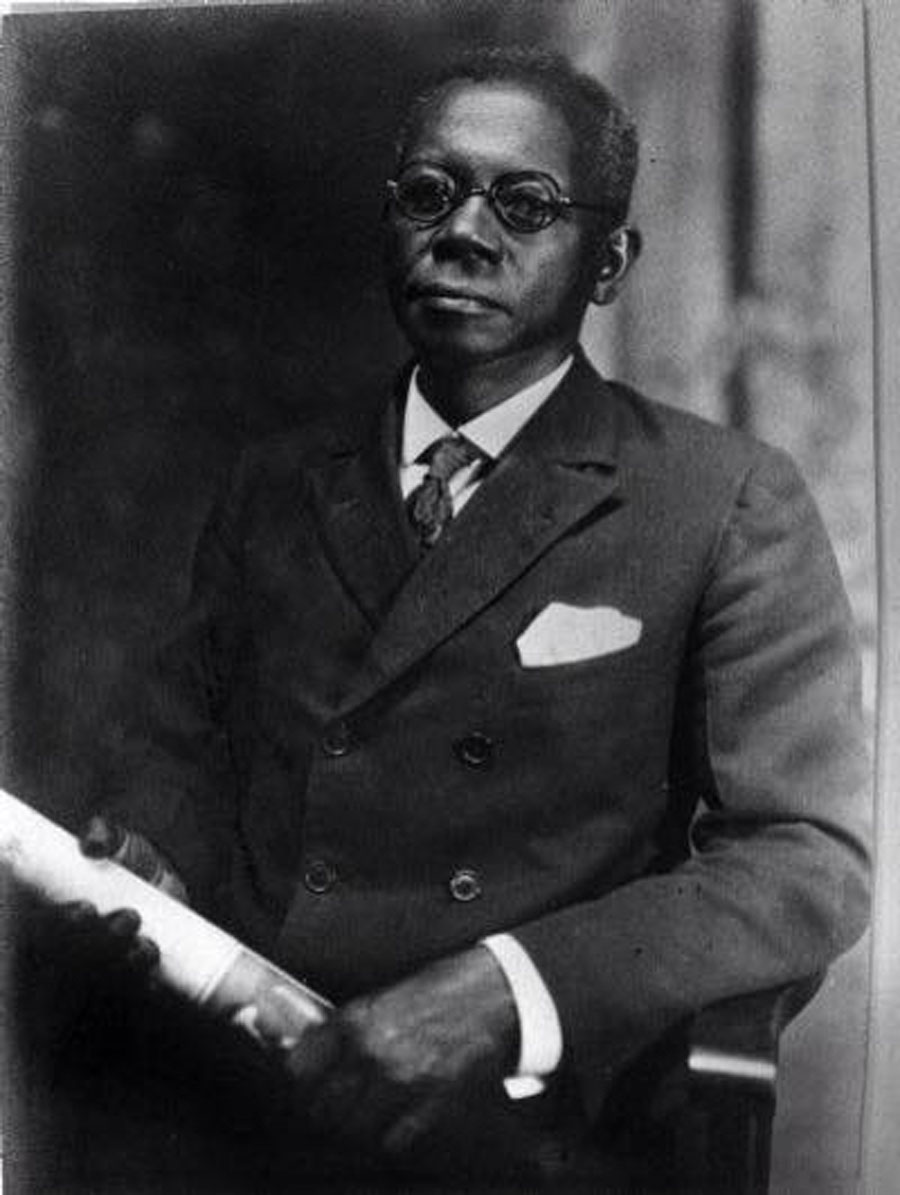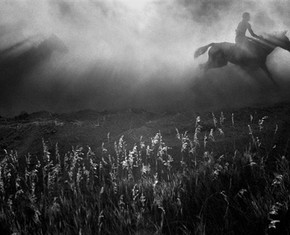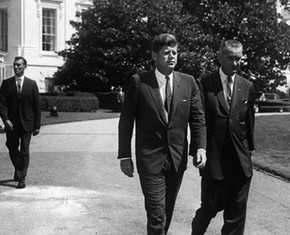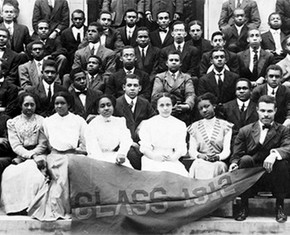The views expressed in our content reflect individual perspectives and do not represent the authoritative views of the Baha'i Faith.
How did Miami, Florida’s first black millionaire—the son and grandson of slaves—become a Baha’i? How did his new Faith affect his life?
Readers of this series will recall Alain Locke, the first African American Rhodes Scholar (1907), known as the intellectual leader and “Dean of the Harlem Renaissance.” Locke became a Baha’i in 1918, the very same year that he was awarded his Ph.D. in philosophy at Harvard University. Locke went on to teach at Howard University, the premier historically black university in the United States. After having been fired by Howard’s white president for advocating equal pay among Howard’s black-and-white faculty, Alain Locke went on an extensive speaking tour in the Midwest and Deep South, to spread the Baha’i message of equity, the abolition of racial prejudice and the oneness of humanity:
… equity is the most fundamental among human virtues. The evaluation of all things must needs depend upon it. … It beseemeth all men, in this Day … to establish the unity of all mankind. – Baha’u’llah, Gleanings from the Writings of Baha’u’llah, p. 203.
The Baha’i News Letter published a report of Locke’s trip. After referring to the publication of The New Negro “by Dr. Alain Locke, our brilliant Baha’i brother of Washington, DC and New York City,” the article went on to say:
Altogether inadequate has been the mention in previous issues of the News Letter of the remarkable work carried on throughout the South during the winter by Mr. Louis Gregory, Mr. Howard MacNutt, Dr. Locke and Mrs. Louise Boyle. These teachers, in cooperation with the Spiritual Assembly of Miami and many Baha’i groups and isolated believers, held an astounding number of meetings from autumn to spring, in churches, schools clubs [sic] and private homes, with the result that a powerful concentration of spiritual forces was focussed on this great and important territory. – “News of the Cause,” Baha’i News Letter, No. 10 (Feb. 1926): pp. 6–7.
According to historian Gayle Morrison, this Baha’i-sponsored trip to bring the Faith’s message of racial unity to Southern African Americans began in October 1925. There were seven Baha’i groups in Florida at that time. Morrison notes that “successful meetings” were held in Miami, Jacksonville and St. Augustine. How far into the spring of 1926 the trip lasted is not certain. Some other details about Locke’s trip, which have recently been brought to light, appear in the Southern Regional Teaching Committee Report:
An important contribution to the teaching service has been rendered during the past few months by Dr. Alain Locke of Washington, who is regarded by many as the outstanding scholar of the Negro race in America. Having been invited to address many universities and colleges in various parts of the country Dr. Locke consented to present the Bahai Message to educators and student groups, and has been able to touch the best Negro institutions in the Middle South and Northern Florida. Before proceeding South he was called to the middle West and was thus enabled to give the message at the Dunbar Forum of Oberlin, at Wilberforce University and at Indianapolis, Cleveland and Cincinnati. Dr. Locke has been everywhere received with marked distinction. He writes of the deep spiritual refreshment experienced through his labours for the Blessed Cause.
Through special arrangement with the President, Mrs. Mary Bethune[,] he will make a return visit to the Daytona Industrial Institute in May, and at that time will visit Mr. Dorsey of Miami as his guest to confer on educational plans for the new city. – Southern Regional Teaching Committee (Louise D. Boyle, Agnes Parsons, Louis Gregory), “Report of the Southern Regional Teaching Committee” (15 April 1926), 73–74. Courtesy of Gayle Morrison, e-mail communication, 17 Oct. 2002.
Here, the statement that Alain Locke “will visit Mr. Dorsey of Miami as his guest to confer on educational plans for the new city” requires an explanation. According to the same Southern Regional Teaching Committee report, D. A. Dorsey was the owner of the Dorsey Hotel, where weekly Baha’i meetings were held. The report states:
Its owner, Mr. D. A. Dorsey, is a colored financier, highly regarded by all the promoters of Greater Miami. Having accumulated more than five million dollars, he is now actively engaged in founding a Model Negro City near Miami, in which he has donated a site for a [Baha’i House of Worship].
It is the desire of Mr. Dorsey to use his wealth for the advancement of his race and he will build schools, a university for the arts and sciences, a hospital, modern administration buildings and other institutions for the practical and cultural progress of his people. He is a man of the highest moral character, simple and unassuming, and respected by all—a noble-hearted God-directed man. – Ibid.
 The report also confirms that Dorsey enrolled as a Baha’i, having “accepted the teachings whole-heartedly through the labours of Mr. Louis Gregory and Mr. [Howard] MacNutt and are constantly bringing people of all races to hear the Glad Tidings.” – Ibid.
The report also confirms that Dorsey enrolled as a Baha’i, having “accepted the teachings whole-heartedly through the labours of Mr. Louis Gregory and Mr. [Howard] MacNutt and are constantly bringing people of all races to hear the Glad Tidings.” – Ibid.
Dr. Locke and the attorney Louis Gregory were black, and Howard MacNutt was white. Their example—that racial amity could and did occur among the Baha’is, even during that hate-filled Jim Crow period of American history—must have proven to Dana Dorsey that his goals were not just dreams.
The fate of this “Model Negro City”—and the status of the land that Dorsey endowed for a Baha’i temple—require further investigation. Evidently Dorsey’s “Model Negro City” remained a dream that never translated into reality. But the Baha’i vision of interracial harmony that Dorsey so enthusiastically embraced remains alive and well today in Baha’i community-building activities around the world.
Dorsey’s papers are archived as the “Dana A. Dorsey Collection, 1900–1966” in the Special Collections & University Archives, Green Library, Florida International University. These historic papers (primarily consisting of legal and financial records of his vast real estate empire, including mortgages, leases, rental and loan agreements) were donated to Florida International University by Dana Chapman on October 18, 1999. Other documents related to Dorsey are housed in the Miami Public Library and the Florida Historical Society.
Hoping to find some information regarding the land that Dorsey donated for the building of a local Baha’i House of Worship, no such documents initially came to light. (If any of our readers have any more information regarding Dorsey and the Baha’i Faith, please contact me.)
In an era of racially restrictive covenants and pervasive segregation throughout the Jim Crow era, small wonder that so progressive a man as Dana A. Dorsey would recognize and enthusiastically embrace the Baha’i teachings of human solidarity and ideal race relations, for which the “consciousness of the oneness of humanity” serves as a firm foundation. As Shoghi Effendi, the Guardian of the Baha’i Faith from 1921–1957 wrote:
I am reminded, on this historic occasion, of the significant words uttered by Bahá’u’lláh Himself, Who as attested by the Center of the Covenant [Abdu’l-Baha], in His Writings, “compared the colored people to the black pupil of the eye,” through which “the light of the spirit shineth forth.” – Shoghi Effendi, Messages to the Baha’i World: 1950–1957, p. 136.
















Comments
Sign in or create an account
Continue with Googleor